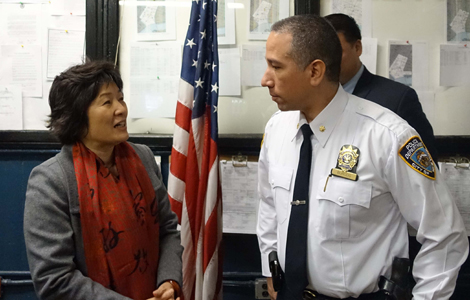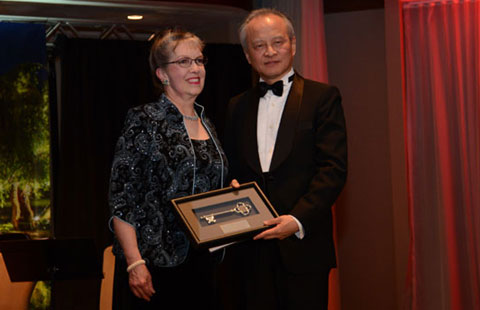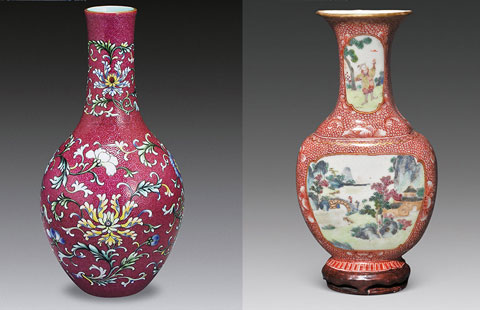Will China-India ties enter a new era?
Updated: 2014-05-22 07:46
By Binod Singh(China Daily)
|
||||||||
India has elected a new government, and its leader Narendra Modi will be sworn in as the prime minister at a time when situations inside and outside the country are volatile. The Indian economy has slowed down in the last couple of years and is predicted to grow at less than 5 percent this financial year. Modi cannot create a miracle to revive the economy as he did to win the election, but there is one country that can help him convert his promises into reality - and that country is China.
How can Modi work with Chinese leaders, who also face the challenge of sustaining their country's growth and restructuring its economy, to the benefit of the Indian economy?
As many say, Modi has followed the "Shenzhen model" to drive the province of Gujarat where he was chief minister for 13 years forward. So he is believed to know what is needed to revive an economy. No wonder, many Indians see him as an ideal leader to develop India's manufacturing sector, in which China could play an important role.
There is huge scope for increasing China-India trade from about $65 billion to 100 billion in the next two years. For that, Modi needs to come up with policies to attract Chinese investment to India, especially because apart from a few provinces like Maharashtra, Tamil Nadu Delhi and Gujarat, the current atmosphere of foreign direct investment in India is not very attractive for Chinese companies.
Some of the challenges that China and India face are similar, like slowing economies, flight of capital and terrorism. The two countries, therefore, could share information on terrorist organizations active in the region and launch joint operations to root them out. As far as the first challenge is concerned, India and China need to work out regional monetary and trade policies to offset the impact of the US monetary policy - mainly responsible for the flight of capital - on their economies.
The role of the United States in the global economy and international relations is also something the two countries should be wary of, because neither the rise of China nor the emergence of India is in the interest of American hegemony. The world's sole superpower has been using divisive policies to keep China and India at loggerheads. In fact, the US is one of the major causes of the prevailing distrust among many Asian countries.
The US is also to blame for the escalating tensions in the East China Sea and the South China Sea. Washington is not ready to loosen its strategic grip over Asia despite its declining economic strength. Since the launch of its "pivot to Asia" policy, the US has been trying to influence India to form a "coalition" with Japan and Australia to check the rise of China. Perhaps Modi will make it clear that India will not be part of any contain-China policy floated by the US.
Manmohan Singh, the outgoing India's prime minister, succeeded in building a positive working relationship with Asian leaders, which should be considered a great achievement.
The new Indian prime minister can build on Singh's legacy and work with leaders of other Asian countries to help defuse the tensions in the Asia-Pacific region. For instance, he can take the initiative to break the ice between China and Japan, who are locked in a dispute over the Diaoyu Islands in the East China Sea, and help create a peaceful and prosperous Asia. By attempting to do so, he would create an opportunity for India to stop the political rhetoric which at times seems to dominate Sino-Indian ties and focus on real issues of peace and security in the region.
The world will miss the quiet statesmanship of Singh, his humble personality and scholarship. But the new Indian prime minister could add another dimension to Indian diplomacy by using his office to restore peace and prosperity in the region.
The author is an assistant professor at the Center for South Asian Studies, affiliated to Peking University.

 Music at her fingers
Music at her fingers
 Across America Over the Week (Jan 16 - Jan 22)
Across America Over the Week (Jan 16 - Jan 22)
 Spend Chinese New Year in style
Spend Chinese New Year in style
 Ili river valley becomes a popular destination for swans
Ili river valley becomes a popular destination for swans
 Philip Ma: from scientist to businessman
Philip Ma: from scientist to businessman
 Birmingham's Spotlight on China dinner
Birmingham's Spotlight on China dinner
 How to distinguish doucai, wucai, Famille-rose and enamel porcelain
How to distinguish doucai, wucai, Famille-rose and enamel porcelain
 Xinjiang lake in bumper fishing season
Xinjiang lake in bumper fishing season
Most Viewed
Editor's Picks

|

|

|

|

|

|
Today's Top News
Houston's SW Chinatown
China to focus on reforms, opening of capital market
Slowdown brings new risks to banks
Trade group calls for BIT
Market status for China is 'political' issue
Birmingham's Spotlight on China dinner
Bank takes renminbi-clearing seriously
Traditional Garb
US Weekly

|

|







